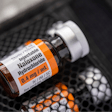
Popular TV shows such as "Breaking Bad" and sensational news reports cite the consequences of methamphetamine usage, but when it comes to having a patient in your chair, what does "meth mouth" actually look like? Researchers from the University of California, Los Angeles examined methamphetamine users in a new study to provide some data to the stories.
The National Institute of Drug Abuse lists meth mouth as one of the many negative consequences of methamphetamine use. According to a 2012 survey, more than 1 million people reported using methamphetamine. The actual number of users is likely higher than that.
Meth mouth is defined as a pattern of caries that resembles early childhood caries and a "distinct and often severe pattern of decay" on the buccal smooth surface of the teeth and the interproximal surfaces of the anterior teeth, according to the ADA's overview of the condition.
Researchers from the University of California, Los Angeles School of Dentistry noted that examples of meth mouth, extreme dental decay, and tooth loss were widely disseminated by the news media "without being linked to rigorous epidemiological studies that validated the reports" (BMC Oral Health, July 5, 2015).
As a first step toward scientifically verifying these anecdotal reports, the researchers used the infrastructure of the Methamphetamine Treatment Project (MTP), a multisite clinical study of more than 550 meth users, to examine the health consequences of chronic meth use in a representative sample of users.
The researchers aimed to evaluate a quality assurance program used in the large, cross-sectional study of meth users to ensure the credibility of data collection and the integrity and validity of the clinical study.
The researchers recorded the occurrence and nature of dental caries and periodontal disease in patients with a range of meth usage and investigate if the caries patterns could be used to distinguish users from nonusers. The study was conducted during a 30-month period between 2011 and 2013 at two large community health centers in Los Angeles.
In the study, the participants were generally older than 30 years, male, and Hispanic or non-Hispanic black; had lower educational levels; were likely to be smokers, and had moderate to heavy meth use. If a patient used meth for less than 10 of the last 30 days before examination, they were considered a light user.
Overt dental disease
The dental findings from the study were compared with those from a similar group of nonusers enrolled in the National Health and Nutrition Examination Survey (NHANES III). "Overt dental disease" was a key distinguishing comorbidity in chronic meth users, the researchers wrote. The MTP meth users had significantly higher rates of missing teeth and dental disease than the nonusers and reported long-term unmet oral health needs, they added.
The researchers found that more than 93% of users had caries at some point, with more than 57% having untreated caries at time of examination. More than 15% had at least five surfaces of anterior decay, and more than 90% of users had periodontitis.
When examining comparability and uniformity of the data collection, the researchers estimated the intraclass coefficients (ICC), with numbers closer to 100% indicating greater interrater reliability. They found that ICCs ranged from 0.87 to 0.89 for overall attachment loss and 0.79 to 0.81 for pocket depth across all periodontal sites for those patients studied. Likewise, the ICCs ranged from 0.88 to 0.91 for measures of overall gingival recession. When looking at caries experience and tooth retention, the dental examiners at both clinical sites showed "nearly ideal correlation," with ICCs ranging from 0.96 to 0.99.
However, for attachment loss, ICCs for facial measures ranged from 0.54 to 0.82, and they ranged from 0.64 to 0.87 for the distolingual (DL). The ICC values for pocket depth were lower than those for attachment loss at one of the clinical sites. The ICCs for interproximal facial measures ranged from 0.43 to 0.60, and they ranged from 0.75 to 0.85 for distolingual pocket depth.
The authors concluded that, overall, the quality assurance program confirmed the quality of the data collected on the distribution of dental caries and periodontal disease in meth users.



















